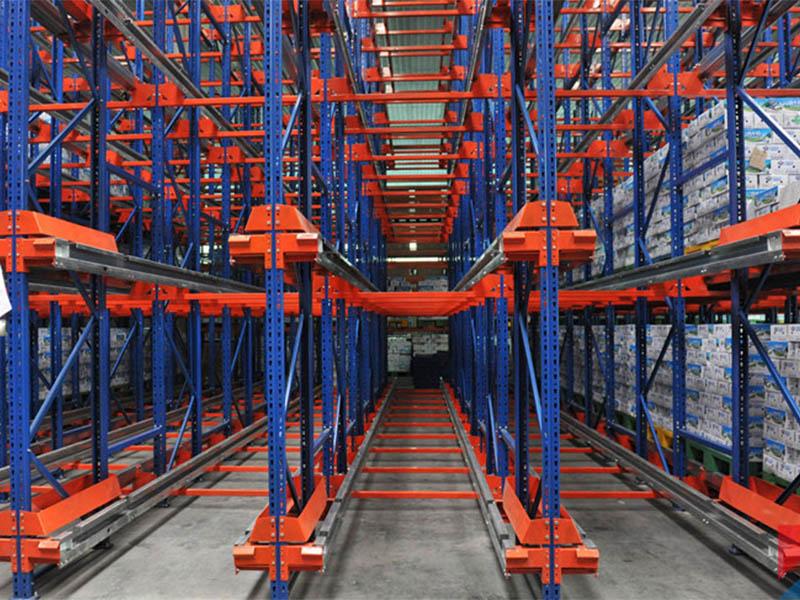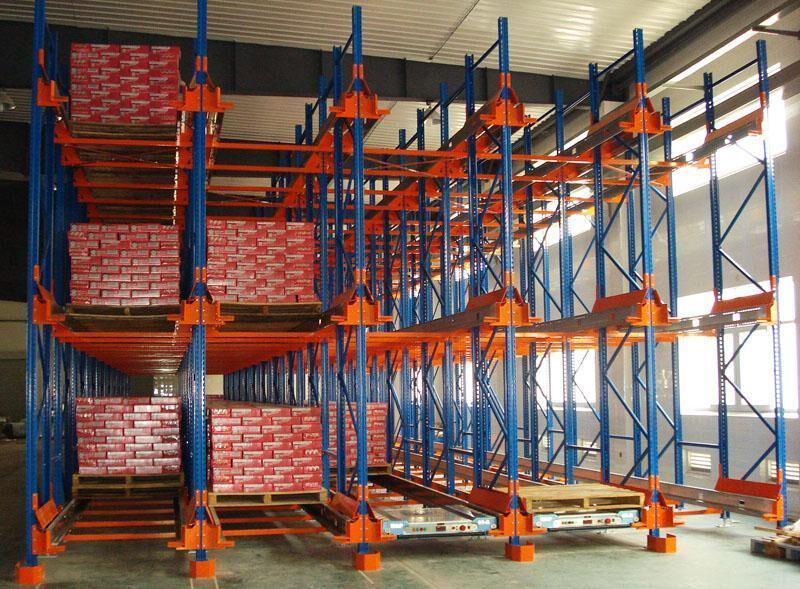The logistics world is buzzing about pallet-shuttle racking systems, and for good reason. As e-commerce demand explodes and supply chains get smarter, warehouses face mounting pressure to do more with less space, fewer workers, and tighter deadlines. Enter the pallet shuttle – a game-changing automation solution that’s redefining how modern facilities handle inventory. Let’s break down why this technology is becoming the MVP of warehouse operations across America.
Picture this: A typical warehouse wastes up to 40% of its vertical space according to Material Handling Institute data. Pallet-shuttle racking flips this script by creating ultra-dense storage configurations. Unlike traditional selective racking that needs wide aisles for forklifts, these systems use guided rails and automated carts to slide pallets deep into compact lanes.
"We’ve doubled our storage capacity without adding square footage," says Jake Rivera, operations manager at a Midwest 3PL provider. "With pallet shuttle racking, we’re storing 28 pallets deep in lanes that previously held just 6." This space efficiency isn’t just about stacking higher – it’s about smarter cube utilization that directly impacts real estate costs and scalability.

Here’s the hard truth: The warehouse industry had over 400,000 unfilled jobs in 2023 (BLS data). Pallet-shuttle systems tackle this crisis head-on by reducing manual labor needs. The semi-automated shuttles handle the grunt work of transporting pallets within racks, allowing workers to focus on higher-value tasks.
Key advantages:
"Before pallet shuttle racking, we needed three operators per shift just for putaway," notes San Diego-based logistics director Maria Chen. "Now one person manages twice the throughput." This labor optimization is crucial as wages rise and skilled workers become harder to retain.
The frozen food sector is all-in on pallet-shuttle racking, and the numbers explain why:
Major grocery distributors report 98% order accuracy since implementing these systems in their freezer farms. The airtight storage lanes also minimize temperature fluctuations – a critical factor when a single degree can spoil entire shipments.
While the upfront cost of pallet-shuttle racking gives some managers sticker shock, the long-term math tells a different story:
Typical Payback Period
Cost drivers flipping to savings:
"As our shuttle system hit year three, we’re seeing 22% lower cost per pallet handled," shares Atlanta-based warehouse owner Raj Patel. "That’s real money we’re reinvesting in robotics integration."
Amazon’s same-day delivery standard has changed the game for everyone. Pallet-shuttle racking provides the agility needed to compete:
Los Angeles apparel distributor StyleHub credits their shuttle system for cutting holiday season overtime by 75% while hitting 99.4% on-time shipments.
Modern warehouses aren’t just chasing efficiency – they’re being pushed to reduce environmental impact. Pallet-shuttle racking delivers ESG benefits that resonate with today’s eco-conscious consumers:
"We’ve eliminated 18 tons of cardboard waste annually thanks to fewer product replacements," reports Colorado-based sustainable logistics firm EcoShift. Their LEED-certified facility uses solar-powered shuttle systems to achieve carbon-neutral operations.
Success with pallet-shuttle racking requires more than just writing a check. Industry veterans emphasize:
Do:
Don’t:
Chicago 3PL firm LogiCore learned this hard lesson: "We initially forced square pegs into round holes with mixed pallet sizes. Standardizing to Euro pallets boosted shuttle efficiency by 200%."

While not a universal solution, pallet-shuttle systems make compelling sense for:
As robotics and AI continue evolving, expect pallet-shuttle racking to become even smarter. Early adopters are already pairing these systems with predictive analytics and IoT sensors for real-time inventory intelligence.
Final Thought
The shift to pallet-shuttle racking isn’t just about keeping up – it’s about future-proofing operations in an era where speed, space, and sustainability define supply chain success. As labor markets tighten and consumer expectations soar, this technology offers a rare trifecta: immediate savings, long-term scalability, and climate-conscious operations. The question isn’t "Can we afford to implement it?" but rather "Can we afford not to?"
 Wechat
Wechat
 Whatsapp
Whatsapp